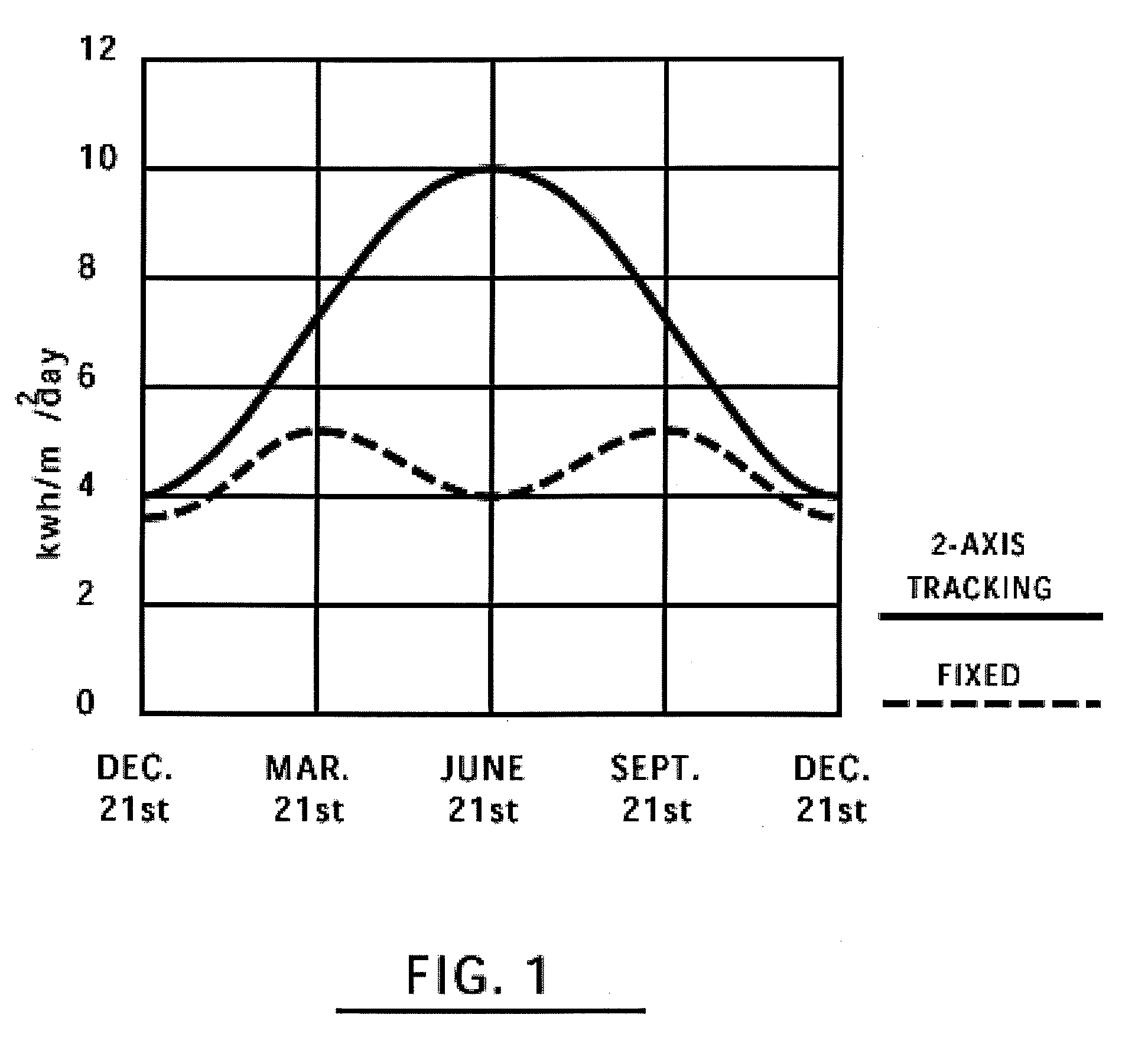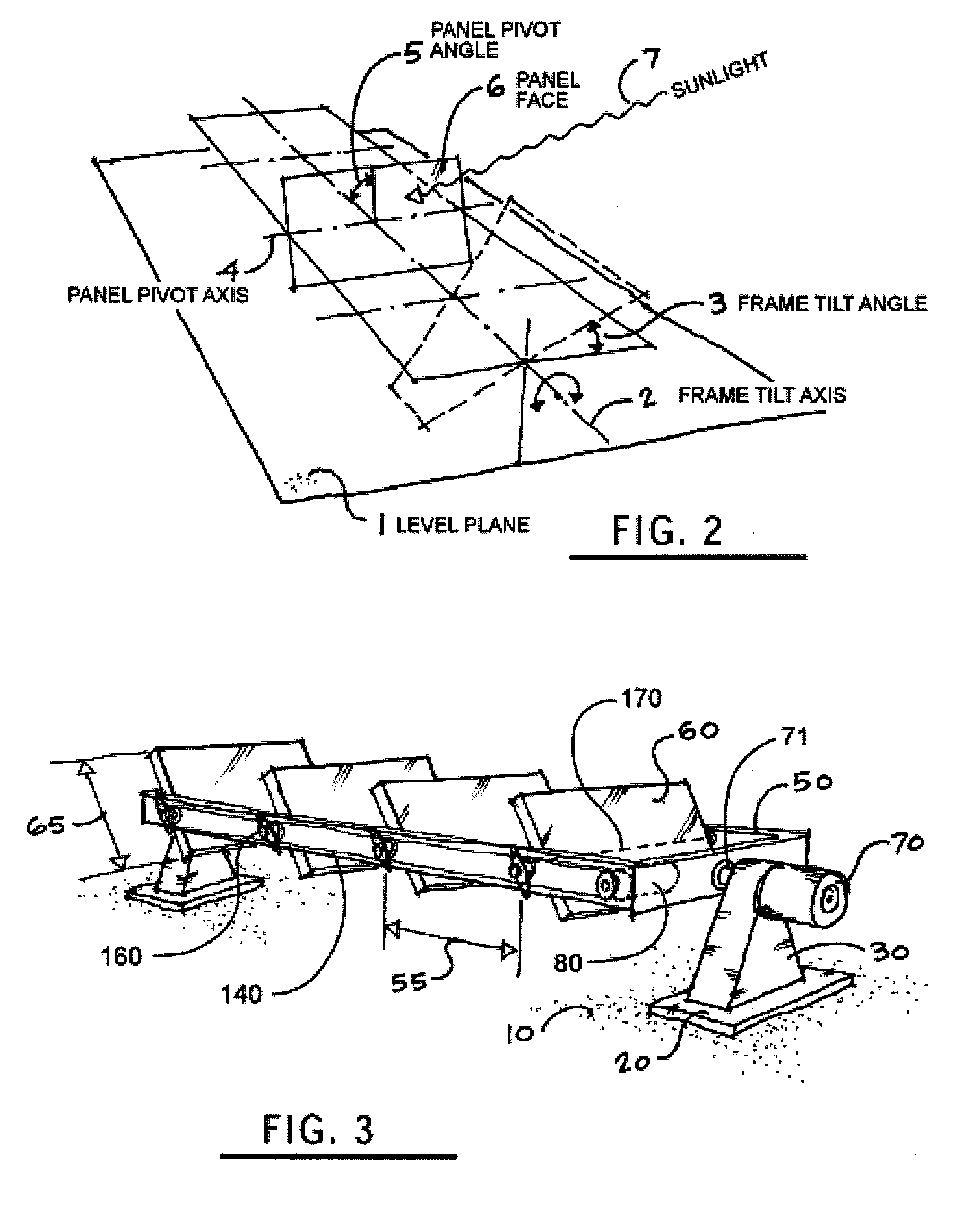Dual Axis Sun-Tracking Solar Panel Array
a solar panel array and solar panel technology, applied in the field of solar panel array solar panel tracking system, can solve the problems of prone to malfunction, mechanical complexity, and inability to keep the solar panel, and add complexity to an already complex panel pivoting mechanism
- Summary
- Abstract
- Description
- Claims
- Application Information
AI Technical Summary
Benefits of technology
Problems solved by technology
Method used
Image
Examples
Embodiment Construction
[0027]The present invention relates to the systems for adjusting the position of the photovoltaic panels such that they can be perpendicular to the incident sunlight. The orientation of the photovoltaic panels can be controlled about two axes to provide for separate pivot and tilt movements. The photovoltaic panels can be pivotably mounted along the longitudinal axis of tiltable frames. The substantially parallel photovoltaic panels in a frame can be simultaneously pivoted by a pivoting drive mechanism attached to the frame. Multiple tiltable frames can be arranged parallel to each other, thus creating a 2-D matrix of photovoltaic panels. The tiltable frames can be supported by an elevated structure permitting the unobstructed rotation of both the frames and the panels inside the frames. The frames can be tilted by a per-frame mechanism or a mechanism that is common to multiple frames. A controller can synchronize the tilt and pivot, such that the combined rotation of the photovolta...
PUM
 Login to View More
Login to View More Abstract
Description
Claims
Application Information
 Login to View More
Login to View More - R&D
- Intellectual Property
- Life Sciences
- Materials
- Tech Scout
- Unparalleled Data Quality
- Higher Quality Content
- 60% Fewer Hallucinations
Browse by: Latest US Patents, China's latest patents, Technical Efficacy Thesaurus, Application Domain, Technology Topic, Popular Technical Reports.
© 2025 PatSnap. All rights reserved.Legal|Privacy policy|Modern Slavery Act Transparency Statement|Sitemap|About US| Contact US: help@patsnap.com



